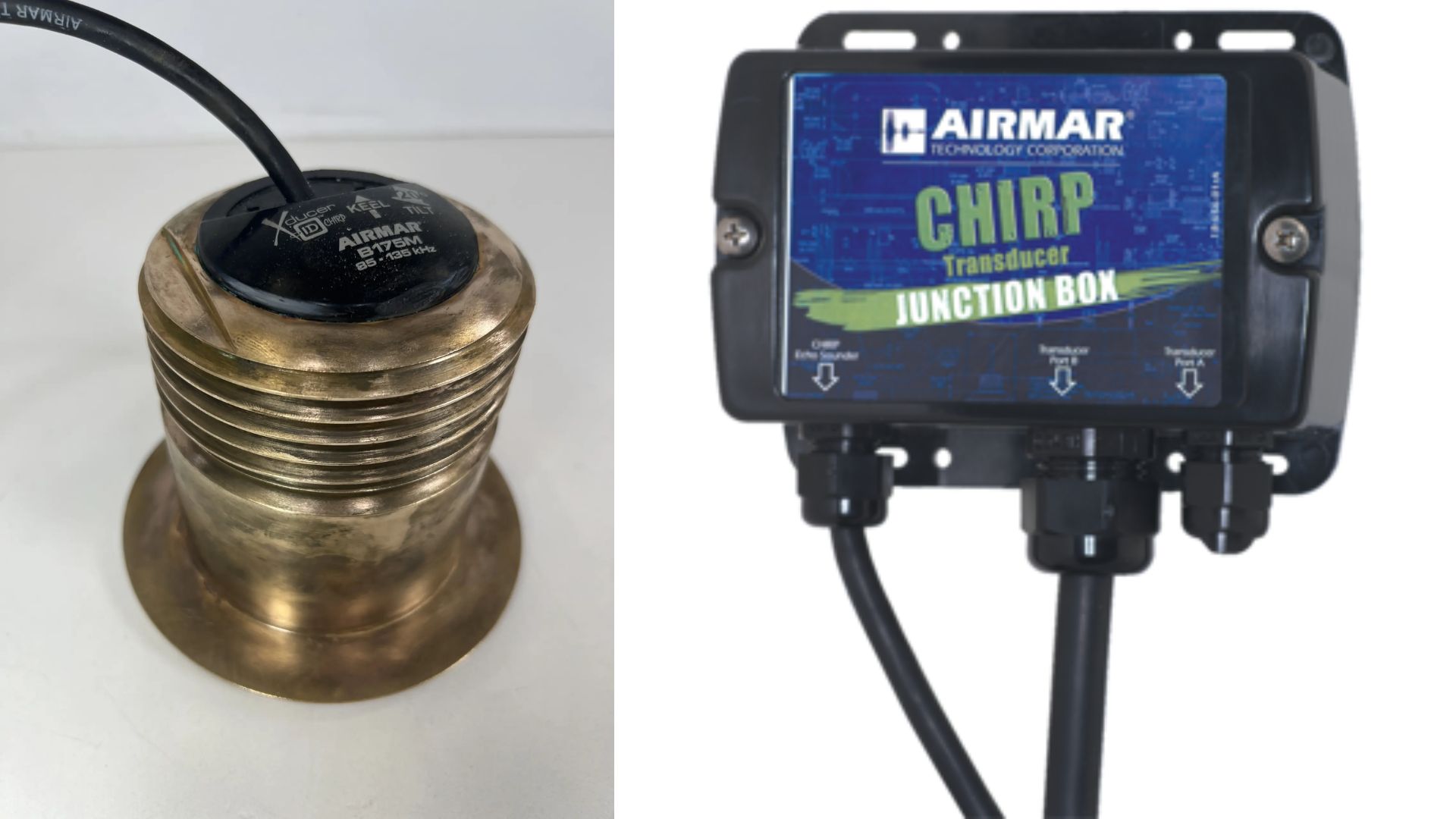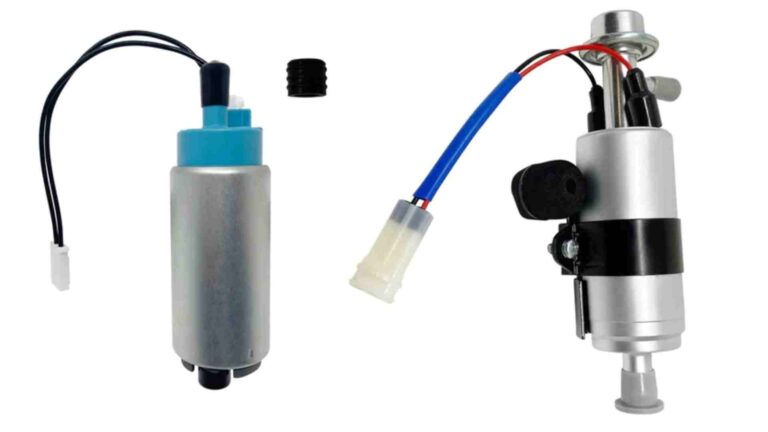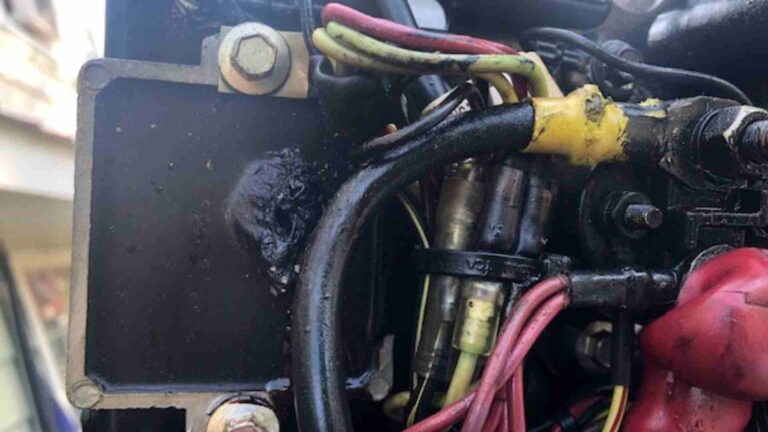Comparing the Raymarine B175M and Airmar
Marine transducers are indispensable tools for boaters and anglers, providing critical data about the underwater environment to enhance navigation and fishing success. Among the top contenders in the marine electronics market are the Raymarine B175M and various Airmar transducers. This in-depth comparison explores their features, design, performance, installation, and suitability for different boating and fishing needs, helping you choose the best transducer for your vessel. With a focus on clarity and actionable insights, this guide is optimized for readers seeking reliable information to make informed purchasing decisions.
Understanding Marine Transducers
Marine transducers are sophisticated devices that convert electrical energy into sound waves and vice versa, enabling sonar technology to map the underwater world. They transmit sound waves that bounce off objects like fish, structures, or the seabed, then convert the returning echoes into electrical signals for display on fishfinders or chartplotters. This technology is vital for safe navigation, depth sounding, and locating fish.
Transducers typically consist of a housing, a transducer element (often made of piezoelectric ceramics), and a cable connecting to the display unit. The housing protects internal components from water, while the transducer element handles sonar signal transmission and reception. Different mounting options—through-hull, in-hull, and transom-mounted—cater to various boat types and user preferences.
Key Features to Consider in a Transducer
When selecting a marine transducer, several factors influence performance and suitability:
- Frequency Range: Determines depth penetration and image detail. Higher frequencies (e.g., 200 kHz) offer detailed imaging in shallow water, while lower frequencies (e.g., 50 kHz) penetrate deeper but with less detail.
- Beamwidth: Affects the sonar coverage area. Narrow beams (e.g., 10–20°) provide precise targeting, while wider beams (e.g., 40° or more) cover larger areas with reduced detail.
- Power Output: Measured in watts, higher power (e.g., 1 kW) enhances signal strength, improving clarity and depth performance.
- Mounting Options: Through-hull mounts offer superior performance, transom mounts are easier to install, and in-hull mounts avoid hull penetration but may lose some signal strength.
- Durability: Must withstand harsh marine conditions, including saltwater, UV exposure, and physical impacts. Materials like bronze or stainless steel are preferred for corrosion resistance.
These factors guide the comparison between the Raymarine B175M and Airmar transducers, focusing on their ability to meet diverse boating and fishing demands.
Raymarine B175M: A Deep Dive
The Raymarine B175M is a high-performance 1 kW CHIRP transducer designed for anglers prioritizing fish detection and target separation in mid-to-deep waters. Its robust feature set makes it a favorite for both recreational and professional use.
Design and Construction
The Raymarine B175M features a low-profile, bronze housing that minimizes drag, ensuring accurate sonar readings even at high speeds. This design is ideal for powerboats and sailboats, offering a sleek profile that reduces turbulence. The transducer incorporates a ceramic element for precise frequency tuning, delivering crisp sonar imagery critical for identifying fish and structures.
A stainless steel mounting bracket enhances durability, providing excellent resistance to corrosion in saltwater environments. The B175M is available in three tilted-element configurations (0°, 12°, or 20°) to match hull deadrise angles, ensuring the sonar beam is oriented vertically for optimal echo returns.
Specifications:
- Frequency Range: Medium CHIRP, 85–135 kHz
- Beamwidth: 16°–11°
- Power Output: 1 kW
- Max Depth: Up to 457 m (1,500 ft)
- Mounting Style: Tilted Element Thru-Hull
- Material: Bronze
- Cable Length: 9 m (30 ft)
- Connector: Raymarine 11-Pin or Airmar 12-Pin (MMC)
- Weight: 1.3 kg (2.8 lb)
- Price: Approximately $1,379 USD (Raymarine B175M, A80049)
Performance and Efficiency
The B175M leverages CHIRP technology, transmitting a continuous range of frequencies for superior target separation and clarity. This is particularly valuable for distinguishing fish from structures or dense schools, making it a go-to choice for cod fishing or deep-water bottom fishing. Its medium frequency range (85–135 kHz) balances detail and depth, performing well in depths up to 457 m (1,500 ft) under ideal conditions.
User feedback highlights the B175M’s ability to deliver razor-sharp bottom details in 80–300 ft of water, with some anglers reporting clear imagery down to 426 ft compared to lower-power transducers. However, performance may fade beyond 1,000 ft, especially at higher speeds or in turbulent conditions, due to its medium-frequency limitations.
Installation and Maintenance
The B175M supports through-hull or transom-mounted installations, with comprehensive guides and hardware included for DIY setups. The through-hull option requires a 95 mm (3-3/4″) hole in fiberglass or wood hulls, or 105 mm (4-1/8″) in metal hulls. Proper placement is critical to avoid turbulence from hull steps or strakes, which can introduce air bubbles and degrade performance.
Maintenance involves regular inspection for marine growth or damage, with cleaning as per Raymarine’s guidelines. Users report straightforward upkeep, with the bronze housing resisting corrosion effectively.
User Experiences
“The B175M gives razor-sharp detail in 80–300 ft, better than my old B260.” – Gerg (The Hull Truth)
“Works great for fluke fishing—picks up sinker movements clearly.” – Forum User
Airmar Transducers: A Broad Perspective
Airmar is a leading manufacturer of marine transducers, supplying models for various brands, including Raymarine. For this comparison, we focus on the Airmar B175 series (e.g., B175L, B175H, B175HW, B175MW) and other popular models like the TM265LH, which offer diverse frequency and beamwidth options.
Design and Durability
Airmar transducers are renowned for robust construction, typically featuring bronze or high-grade plastic housings to withstand impacts and corrosion. The B175 series mirrors the Raymarine B175M’s low-profile, tilted-element design, available in 0°, 12°, or 20° tilts to suit different hull deadrise angles. Models like the TM265LH are bulkier, designed for transom or in-hull mounting, with urethane acoustic windows for signal clarity.
Airmar’s innovative designs minimize drag, enhancing fuel efficiency and speed without sacrificing sonar accuracy. The B175MW, for instance, introduces an ultra-wide beam for expansive coverage, ideal for pelagic fishing.
Sample Specifications (B175MW):
- Frequency Range: Medium Ultra-Wide CHIRP, 60–100 kHz
- Beamwidth: 57°–73° (port/starboard), 16° (fore/aft)
- Power Output: 1 kW
- Max Depth: Up to 400 m (1,300 ft)
- Mounting Style: Tilted Element Thru-Hull
- Material: Bronze
- Cable Length: 9–10 m (30–33 ft)
- Connector: Raymarine 11-Pin or Airmar 12-Pin
- Weight: 2.7 kg (6 lb)
- Price: Approximately $1,500–$1,700 USD (varies by model and vendor)
Performance and Functionality
Airmar transducers offer a range of frequency options to suit different fishing scenarios:
- B175L (Low CHIRP, 40–60 kHz): Wide beam (32°–21°) for deep-water fishing (up to 914 m/3,000 ft), but less detailed bottom topography due to its broad cone.
- B175H (High CHIRP, 150–250 kHz): Narrow beam (25°) for shallow-water precision, ideal for reefs and wrecks.
- B175HW (High-Wide CHIRP, 150–250 kHz): Wide beam for coastal fishing, offering excellent coverage down to 152 m (500 ft).
- B175MW (Medium Ultra-Wide CHIRP, 60–100 kHz): Ultra-wide beam (57°–73°) for mid-depth pelagic species, with a max depth of 400 m (1,300 ft).
- TM265LH (Low/High CHIRP, 42–65 kHz/130–210 kHz): Versatile for deep (up to 3,000 ft) and shallow water, but bulkier and less hydrodynamic.
The B175M (85–135 kHz) is often favored for cod fishing in 1,000–1,500 ft, providing better bottom detail than the B175L’s wider beam. Users report the TM265LH excels in deep drops (2,000–5,500 ft), especially when paired with a sonar module like the GSD26.
Installation and Care
Airmar transducers support multiple mounting options, with through-hull and transom mounts being most common. The B175 series requires a similar hole size to the Raymarine B175M (95 mm for fiberglass/wood hulls). In-hull setups, like the M265LH, involve mounting in a water-filled tank, reducing hull penetration but potentially degrading signal strength through the hull.
Maintenance includes regular cleaning to remove marine growth and inspecting for scratches or damage, which can cause aeration and disrupt readings. Users note that transom-mounted models like the TM265LH struggle at speeds above 8 knots due to turbulence, particularly on deep-V hulls.
User Experiences
“The B175L is great for deep water but has a very wide beam, making bottom detail fuzzy.” – Mexican Gulf (THT)
“At 1,300 ft, I had to adjust ping rate for better bottom reading.” – Ranmar850
Side-by-Side Comparison
To aid decision-making, here’s a detailed comparison of the Raymarine B175M and Airmar B175M, with notes on other Airmar models where relevant.
Design and Build
| Feature | Raymarine B175M | Airmar B175M |
|---|---|---|
| Material | Bronze | Bronze |
| Mounting | Tilted Element Thru-Hull (0°, 12°, 20°) | Tilted Element Thru-Hull (0°, 12°, 20°) |
| Connector | Raymarine 11-Pin or Airmar 12-Pin (MMC) | Airmar 12-Pin (Mix-and-Match) |
| Weight | 1.3 kg (2.8 lb) | 1.3 kg (2.8 lb) |
| Durability | Stainless steel bracket, corrosion-resistant | High-grade urethane window, corrosion-resistant |
Analysis: Both transducers share identical core designs, as Airmar manufactures Raymarine’s B175M. The Raymarine version includes a sense resistor for direct compatibility with Raymarine MFDs, reducing noise from additional connectors. Airmar’s Mix-and-Match cables offer flexibility but may introduce slight noise, though Airmar tech support claims no performance difference.
Performance
| Feature | Raymarine B175M | Airmar B175M |
|---|---|---|
| Frequency | 85–135 kHz (Medium CHIRP) | 85–135 kHz (Medium CHIRP) |
| Beamwidth | 16°–11° | 16°–11° |
| Max Depth | 457 m (1,500 ft) | 457 m (1,500 ft) |
| Power Output | 1 kW | 1 kW |
| Target Separation | Excellent for mid-depth fish and structures | Excellent for mid-depth fish and structures |
Analysis: Performance is nearly identical, with both excelling in mid-depths (80–1,500 ft). The B175M outperforms the B175L for cod fishing due to its narrower beam, providing clearer bottom topography. Compared to the B175HW, the B175M sacrifices shallow-water coverage for deeper penetration. The TM265LH offers greater depth (up to 3,000 ft) but is less suited for high-speed applications.
Installation
| Feature | Raymarine B175M | Airmar B175M |
|---|---|---|
| Mounting Options | Thru-Hull or Transom | Thru-Hull or Transom |
| Hole Size | 95 mm (fiberglass/wood), 105 mm (metal) | 95 mm (fiberglass/wood), 105 mm (metal) |
| Ease of Installation | Comprehensive guide, DIY-friendly | Comprehensive guide, DIY-friendly |
Analysis: Installation processes are similar, with both requiring careful placement to avoid turbulence. Stepped hulls pose challenges for transom mounts, limiting readings to 4–8 knots. In-hull options (e.g., Airmar M265LH) are viable but may reduce signal strength.
Pricing
| Model | Price (USD) |
|---|---|
| Raymarine B175M | ~$1,379 |
| Airmar B175M | ~$1,300–$1,400 |
| Airmar B175L | ~$1,400–$1,500 |
| Airmar B175HW | ~$1,200–$1,300 |
| Airmar B175MW | ~$1,500–$1,700 |
| Airmar TM265LH | ~$1,800–$2,000 |
Choosing the Right Transducer
The choice between the Raymarine B175M and Airmar transducers depends on your fishing goals, boat type, and budget:
- Raymarine B175M: Ideal for anglers targeting cod or bottom fish in 80–1,500 ft, offering excellent target separation and compatibility with Raymarine MFDs (e.g., Axiom Pro). Best for users prioritizing seamless integration and mid-depth performance.
- Airmar B175M: Functionally identical to the Raymarine version, but more cost-effective with Mix-and-Match cables. Suitable for non-Raymarine systems (e.g., Simrad, Garmin).
- Airmar B175L: Suited for deep-water fishing (>1,500 ft), such as swordfish, but its wide beam reduces bottom detail.
- Airmar B175HW: Perfect for shallow-water (<500 ft) trolling or coastal fishing, with a wide beam for broad coverage.
- Airmar B175MW: Excellent for mid-depth pelagic species, with an ultra-wide beam for maximum water column coverage.
- Airmar TM265LH: Best for deep dropping (2,000–5,500 ft), but requires careful installation to avoid turbulence.
Considerations for Specific Use Cases
- Cod Fishing (1,000–1,500 ft): The B175M is the top choice for its narrow beam and detailed bottom imaging, as confirmed by Airmar and user feedback.
- Shallow-Water Trolling: The B175HW excels for its wide beam and high-frequency clarity.
- Deep Dropping: The TM265LH or B175L offers superior depth performance, with ping rate adjustments enhancing deep-water imaging.
- Stepped Hulls: Through-hull mounts before steps are recommended to minimize aeration. In-hull setups can bypass turbulence but may compromise signal strength.
Installation Tips and Troubleshooting
Proper installation is critical for transducer performance. Key tips include:
- Placement: Mount transducers in areas with clean water flow, avoiding steps, strakes, or protrusions. For stepped hulls, install before the first step.
- Tilt Adjustment: Ensure the tilted element matches the hull’s deadrise for vertical sonar beam orientation.
- Ping Rate: In deep water, reduce ping rate (e.g., 1% per 400 ft beyond 400 ft) to lengthen pulse duration, improving bottom detection.
- Testing: Avoid pinging high-power transducers out of water to prevent overheating damage. Test in water with MFD settings in auto mode initially.
- Troubleshooting: If no depth reading appears (e.g., “- . -“), perform a factory reset on the MFD (e.g., Axiom Pro Power ON Reset) and verify software updates (LightHouse 3 v3.11.42 or later).
Visualizing Performance
To illustrate the differences in beamwidth and depth performance, consider the following table and chart:
Beamwidth vs. Depth Comparison
| Transducer | Frequency (kHz) | Beamwidth | Max Depth (ft) | Cone Diameter at 1,000 ft |
|---|---|---|---|---|
| Raymarine B175M | 85–135 | 16°–11° | 1,500 | ~250 ft |
| Airmar B175L | 40–60 | 32°–21° | 3,000 | ~420 ft |
| Airmar B175HW | 150–250 | 25° | 500 | ~440 ft |
| Airmar B175MW | 60–100 | 57°–73° | 1,300 | ~1,000 ft |
| Airmar TM265LH | 42–65/130–210 | Varies | 3,000 | ~500 ft (low freq) |
Conclusion
The Raymarine B175M and Airmar transducers are both exceptional choices, with the B175M standing out for mid-depth fishing (80–1,500 ft), particularly for cod and bottom fish, due to its narrow beam and detailed imaging. Airmar’s range, including the B175L, B175HW, B175MW, and TM265LH, offers greater flexibility for specific applications, from shallow trolling to deep dropping. The Raymarine B175M’s seamless integration with Raymarine systems and slightly lower price make it appealing for Raymarine users, while Airmar’s Mix-and-Match compatibility suits diverse setups.
Ultimately, your choice depends on your fishing environment, target species, and boat configuration. For cod fishing in 1,000–1,500 ft, the B175M is the clear winner. For deeper or shallower waters, Airmar’s specialized models may better meet your needs. Always consult your boat manufacturer for optimal transducer placement and consider professional installation for complex setups.
Happy Boating!
Share Comparing the Raymarine B175M and Airmar with your friends and leave a comment below with your thoughts.
Read Garmin 8612xsv: GT 54 vs GT 56 Transducer Comparison Guide until we meet in the next article.






